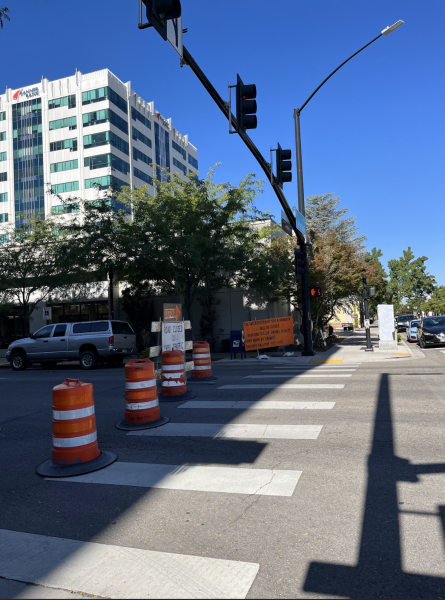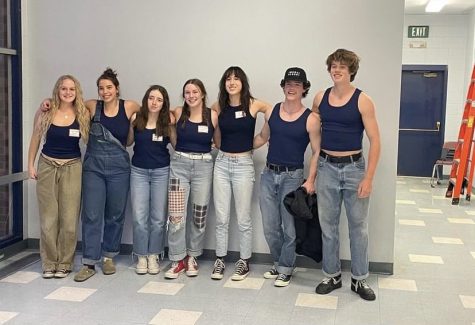What’s Behind the College Application Process?
Photo Credit: Sofi Serio
Mr. Chehey’s hallway lined with college posters gives more of a cheerful look at the college application process.
October 24, 2018
College application seasons brings mounting piles of dreadful work, from the Common App and supplemental essays, to counselor and teacher recommendations. It can get tremendously overwhelming. While the advent of the internet makes it easy to send in and fill out college essays, that might be about the only thing that’s easy for applying to college in this day and age.
Chances are, if you ask your parents, they vaguely remember sending in a transcript or two and writing an essay or maybe three. There were no SAT prep classes, no college visits, no padding applications with superficial extracurriculars.
Patti Lough graduated from Carnegie Mellon in 1972. She chose the school based off how the application deadline wasn’t closed when she applied. It was mid-April, and she applied only after being rejected from the four Ivies she had her heart set on.
Lough spent her career tutoring kids in various subjects and helping them to prepare for standardized tests, and when it comes to the competitiveness of college nowadays, she explained, “We absolutely did not prepare for college the way you do now. The competition was nothing like today. I’m not sure we even knew acceptance rates. It’s a lot of pressure you guys have, and I don’t think it’s necessarily a good thing.”
So what has made the college application process so ridiculously competitive? More kids go to college now than when our parents did. The United States Department of Labor reports that a remarkable 69 percent of high school seniors went on to college in 2016, compared to 38 percent in 1983, a time when many of our parents were freshman in college. The fact that more kids are vying to get into college contributes to the increase in competitiveness of the application process.
When asked if this competitiveness is more helpful or harmful, senior Ella Baker responded, “I think [the application process] is good and bad. It’s good to challenge yourself, but it can be super stressful. It’s more helpful to the colleges than the students.”
The massive increase in tuition since previous years is another benefit for colleges. According to Business Insider, “the average annual increase in college tuition from 1980-2014 grew by nearly 260% compared to the nearly 120% increase in all consumer items.
In short, this means that while the items we buy have increased by more than 100% since 1980, the price of college tuition has increased by more than 200% – double the increase of consumer items.
While it’s downright devastating that students pour countless hours, pools of money, and just plain hard work into college applications while only receiving “denied” messages in return, there is hope for future generations of college applicants.
Schools like Harvard and Stanford have recognized the intense pressure put on students from a young age to become competitive college applicants. They’ve proposed moving to a more holistic review of students by limiting the number of AP classes a student can take while de-emphasizing standardized test scores.
It’s a step in the right direction, but the United States is a long ways off from free college education, a luxury other democratic places like Germany and the Netherlands have already adopted, implying that the hard part of getting into college isn’t the application process, but rather the work put in during high school.












